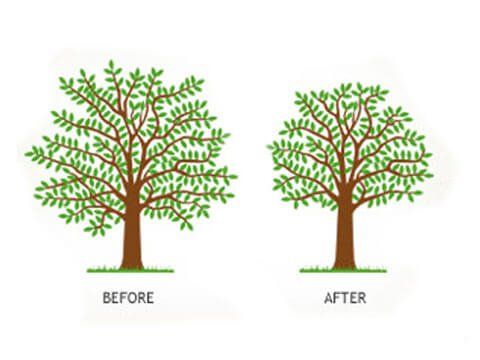What is Tree Felling?
- By Fox Tree Services
- •
- 23 Apr, 2018
As qualified Trees surgeons, we have been carrying out tree felling in Cardiff and throughout South Wales for many years. Felling Trees safely requires us to survey the site and establish the best method to fell the tree and avoid damage to the surrounding areas. We are happy to offer our Tree Felling site surveys for free to all our customers, along with any appropriate advice.
Why Would Tree Felling be Needed?
Tree Felling may be required if a Tree is diseased or has been damaged beyond help by a storm or other such force. If a tree has suffered from storm damage and the damage cannot be saved by using other pruning techniques, then the tree will have to be felled using the correct skills and equipment. If a tree is hung up or has fallen but is caught on a surrounding tree, then this is a safety issue and it needs to be felled.
It may be necessary to fell a tree for other reasons such as the damage it’s causing to surrounding property or other environmental situations. If a tree is too close to a house or other building, then the roots become an issue with the foundations, and often subsidence occurs.
Subsidence can also be traced to the over consumption of moisture from clay soils by tall trees. Willows are often seen as the biggest culprit and if not located at least 40 metres from your property, can cause shrinkage and consequently subsidence. Other trees like Poplars, Oaks and Horse Chestnuts can also be a problem if located too close to property. Smaller varieties like Magnolias and Yew trees are more easily tolerated in smaller gardens. Tree Felling may not be required in all circumstances, but careful reduction and pruning will be of great benefit.
Other reasons to remove a tree completely by felling are if the tree is Dead, Dangerous or Diseased.
Complete Tree Felling Service
Some trees are protected by TPO’s – Tree Preservation Orders. If you live in a conservation area or the tree has a TPO, then you will have to apply for permission from the local authority to remove the tree and sometimes you can offer to replace the tree with a more suitable tree for that location. We are happy to explain this process and make any applications on your behalf.
Traditionally – the Felling of Trees was to provide a source of timber to build houses, the construction of fences, outhouses and barns etc and also as a fuel in the form of logs for heating and cooking.
More Post From Our Blog

Coppicing has been traced back to Neolithic times by archaeologists who have excavated wooden tracks over boggy ground made entirely of coppiced material.
There are written records, going back to at least 1251, which describe the value and type of material cut for woods in East Anglia. Coppicing can provide a constant supply of material for a wide variety of uses. The material is of a size which is easily handled. This was very important before machinery was developed for cutting and transporting large timber, when anything more than 20 miles from a large river could only be used locally. Through the 18th and 19th centuries, coppiced woodlands provided industrial charcoal for the smelting of iron, and bark from which tanning liquors were prepared.
However, by the mid-twentieth century coppicing was in rapid decline and many coppice woods were replanted with conifers, or simply neglected.
Pruning a tree is removing specific branches or stems to benefit the whole tree.




